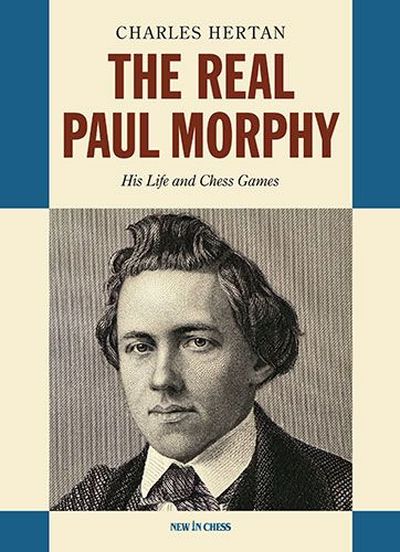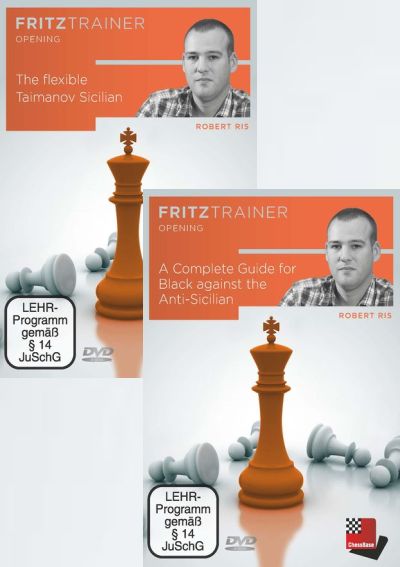Publisher: Siles Press, 528 pages, Softcover
Preface
There was a time when endgame books were fairly scarce - only those by Fine, Keres, Averbach, and a couple other authors could be found on the bookshelves. Now, with a torrent of new chess books pouring into stores every year, that has changed - endgame books are a dime a dozen.
Most chess writers think that chess players want as many positions as possible in an endgame book. And that sounds like a good idea! Give the chess hopeful the most bang for the buck! Stuff everything into one book! This would be reasonable for an endgame encyclopedia, and such books are good research tools. But must every chess author daze his readers with this kind of "overkill"? Of course not! In fact, more than one player has been demoralized by the sheer mass of information that many endgame books offer - it all seems so dull and so hard to grasp.
Almost all players who dream of endgame improvement experience the same frustrating scenario: They buy the latest critically acclaimed and usually over-stuffed endgame title, open it up (hands quivering with the exciting prospect of gleaning arcane knowledge), and read the author's assurances that they now possess the book of ultimate endgame enlightenment. However, after they spend a few days looking over several examples, they inevitably shelve it alongside all their other unread chess tomes.
Pondering this common story led me to ask an important question: How can the whole endgame genre be done differently? That question led to Silman's Complete Endgame Course, which stresses individual guidance and instruction and, yes, hope for players of every rating group. This book is designed to make players who are disgusted with endgame study feel that there is light at the end of the tunnel, and it assures you that you can become an accomplished endgame player with just a little effort.
By offering instruction that's tailor-made to fit a player's individual rating group, and is in accord with that player's future goals, I make endgame study easy to grasp and extremely practical for players and coaches. Of course, each coach will have opinions as to what endgames are appropriate for each rating group, so personal adjustments can always be made. Nevertheless, coaches will find my book to be an invaluable teaching tool that they can use with confidence.
Silman 's Complete Endgame Course is the endgame book that everyone always wanted but couldn't find. Now it's in front of you, and I hope it proves to be everything you always dreamed such a book could and should be.
Jeremy Silman
Los Angeles, CA
Introduction
All chess players want endgame skills, but doing the work to actually achieve this much-needed knowledge is anything but easy. My goal in writing this book was to take a subject that most see as boring and make it palatable, educational, and yes, even fun. Thus the following six essential points make up the philosophy behind Silman 's Complete Endgame Course:
- Rating is important. Players of different strengths need to know different (and level-appropriate) kinds of endgames.
- Guidance is the key. Chess students need to be told which endgames are important for their particular level. Studying endgames that are too advanced for their rating-level will only depress them and waste their time, since they'll rarely (if ever) have need of such knowledge in the kinds of games/positions that players of their ratings usually reach.
- Give players hope. By telling players that they only need to know a finite amount of easily digestible material (based on their strengths/ratings), you give them hope and confidence. Now they'll be willing to invest time in learning the recommended positions and ideas because everything is mapped out and accessible.
- Every player should receive well-rounded training. The correct study of chess calls for balance. For example, a beginner needs to spend very little time on the endgame. (Basic mates are all he or she needs.) Instead, the beginner's main efforts should be devoted to gaining as much tactical acumen as possible. On the other hand, a tournament player in the 1500 range needs quite a bit of critical but easy-to-learn endgame knowledge if he or she wants to move up the rating ladder. However, such a player shouldn't indiscriminately study random endgame positions. The balanced study of tactics, strategy, opening theory, and appropriate endgames is more important here than ever.
- Create a love for the endgame. Most players seem unable to appreciate anything but a mating attack or a tactic/combination. This is really a shame since they are missing a lot of the game's beauty. An appreciation of its final phase will not only allow them to become stronger in that area, but also add to their enjoyment of chess as a whole.
- Introduce a "Unified Field of Endgame Study. " Every player needs to master a certain amount of endgame material that's pertinent to his or her strength. This means that a class "B" player (1600-1799), in order to absorb the material presented in the class "B" section, must have learned everything presented for the lower rating groups! All endgames, even the most difficult theoretical quagmires, are based on basic foundation positions - if you don't learn these, your endgame growth will suffer.
How to read this book
In the introduction to his excellent Dvoretsky's Endgame Manual, Dvoretsky writes, "Amazingly enough, I have not yet found a single endgame manual which I could recommend wholeheartedly to my pupils. Most existing books are either elementary and useful for novices only, or are useless methodologically, or do not cover endgame theory fully."
I'm left wondering about the average strength of Dvoretsky's students. Also, how does he define "novice"? In my experience, a book that "fully" covers the endgame is exactly what players under 2400 don't need! Thus, I strongly recommend that you put aside all other endgame books and trust your endgame study to Silman 's Complete Endgame Course. There is an important place for the various fine endgame books found in my recommended book list. However, they will only prove useful once you finish my course and have gained a solid master's grasp of endgame theory. Remember, I'm trying to make your precious study time count. Jumping from book to book is a fast track to nowhere.
Silman 's Complete Endgame Course is not organized by endgame type, which is how it's been done in the past. Unfortunately, organizing the study of endgames by type ultimately fails the student by offering too much information too fast. Instead, I've divided my book by rating - by what you personally need to know so that your endgame IQ is equal to your overall playing strength.
For example, if you have just learned to play, all you need to study is the section designed for beginners (Part One). After mastering the material there, put the book away and spend your time studying tactics and a few strategic concepts. Once your overall strength tightens up and you feel you're ready to break into class "E", re-open this book and master the material that's been designed for players rated from 1000 to 1199 (Part Two), then repeat this process as you move up the rating ladder.
If you already possess a high rating, let's say class "B" (Part Five), you must make sure you completely understand everything in the earlier sections before tackling the "B" material. If you fail to do this, you'll find yourself lost, confused, and frustrated. Patiently go through each part of the book up to or, at most, one part above your present rating. Make sure you thoroughly understand the lessons in each part of the book. Memorization is a very poor substitute for true understanding.
Once you attain Expert strength (2000-2199), or once you're a strong "A" player and wish to step up to the next level, the book's material changes somewhat and a concept I call "flowcharts" is explored. Nothing in this section will make sense if you haven't carefully studied and absorbed everything I presented earlier.
Next, we come to the Master lessons (Part Eight), which embrace concepts more than positions or memorization. Oddly, I think class "A" players and Experts can get a lot out of this section, so feel free to leap ahead and read it if you've already reached these levels.
Part Nine is Endgames for Pure Pleasure. Here anyone of any rating can enjoy the comic look of entombed or dominated minor pieces, tactics in the endgame, and a study of The Five Greatest Endgame Players of All Time. You might not necessarily understand all of this section's nuances if you're of less than Expert strength, but that shouldn't prevent you from deriving a good deal of pleasure from the examples.
When studying this book, please remember that I've deliberately left out many endgames. Why? Because I don't feel they are important to players under the 2400 level. For example, I heretically decided not to include Bishop and Knight vs. Lone King because it's far from easy to master, and it occurs very rarely in over-the-board play. In fact, I only got it once in my entire career, while IM John Watson and IM John Donaldson never got it at all! Is such a rarity really worth the two or three hours it would take to learn it? I say no. Ultimately, this is what Silman 's Complete Endgame Course is all about: Learning what's useful, and devoting the rest of your precious study time to other areas of the game.


